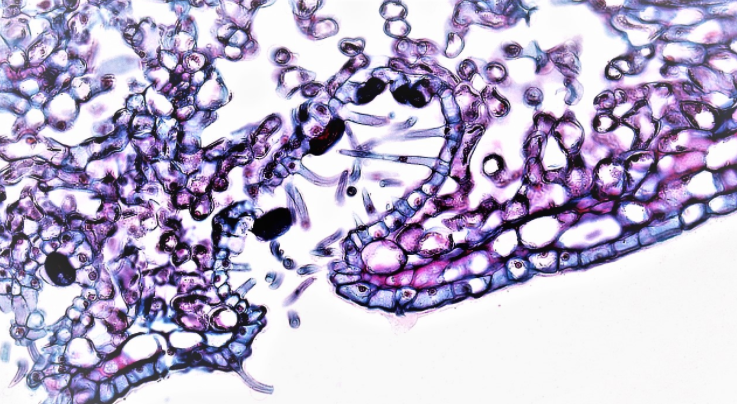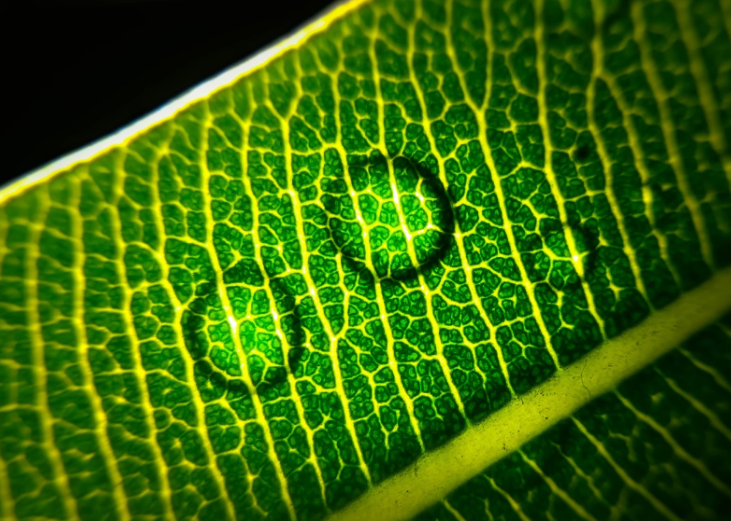
Sunken stomata are found in leaves of
a. Trifolium
b. Lemna
c. Nerium
d. Lilium
Answer
498.9k+ views
Hint: CAM or crassulacean acid metabolism is seen in these plants. It belongs to the Apocynaceae family.
Complete answer:
Nerium consists of sunken stomata, it is an adaptation seen to prevent water loss by transpiration.
CAM plants like Nerium are mostly succulent xerophytes and here the stomata are present in small pit-like structures.
Additional Information:
CAM or Crassulacean Acid Metabolism:
- This process was first observed by three scientists named O-leary, Rouhani, and Black in the Crassulaceae plant family.
- Some other examples of plants showing CAM are Opuntia, Bryophyllum, Euphorbia, etc.
- The stomata in these plants open at night and it is also known as scotoactive stomata.
- In the mesophyll cells of CAM plants, both enzymes of C3 and C4 enzymes are present.
- No kranz anatomy is seen in these plants. C3 cycle takes place during day time and the C4 cycle takes place at night.
The metabolic pathway consists of the following steps:
> Acidification: During night time the carbohydrates stored are converted to phosphoenol pyruvic acid by glycolysis as stomata are open during the night. The carbon dioxide enters inside the leaf and phosphoenolpyruvate reacts with carbon dioxide to form oxaloacetic acid. This oxaloacetic acid undergoes a reduction in malic acid which is stored inside the vacuoles.
> Deacidification: During day time this stored malic acid is decarboxylated for the production of pyruvic acid and the evolution of carbon dioxide gas occurs. This carbon dioxide is then used in the normal photosynthetic process for the production of carbohydrates. Therefore carbon dioxide fixation occurs twice in plant cells.
So, the correct answer is option B ,” Sunken stomata are found in the leaves of Nerium.”

Sunken Stomata in Nerium

Leaf of Nerium
Note: The name CAM came because of two reasons, one of them is that they were first seen in plants of Crassulaceae family and another reason is that due to the accumulation of malic acid in the vacuoles the acidity of the tissues increase. The plants showing CAM show remarkable ability of water conservation. Currently, 23 flowering plant families have been identified which show the CAM pathway.
Complete answer:
Nerium consists of sunken stomata, it is an adaptation seen to prevent water loss by transpiration.
CAM plants like Nerium are mostly succulent xerophytes and here the stomata are present in small pit-like structures.
Additional Information:
CAM or Crassulacean Acid Metabolism:
- This process was first observed by three scientists named O-leary, Rouhani, and Black in the Crassulaceae plant family.
- Some other examples of plants showing CAM are Opuntia, Bryophyllum, Euphorbia, etc.
- The stomata in these plants open at night and it is also known as scotoactive stomata.
- In the mesophyll cells of CAM plants, both enzymes of C3 and C4 enzymes are present.
- No kranz anatomy is seen in these plants. C3 cycle takes place during day time and the C4 cycle takes place at night.
The metabolic pathway consists of the following steps:
> Acidification: During night time the carbohydrates stored are converted to phosphoenol pyruvic acid by glycolysis as stomata are open during the night. The carbon dioxide enters inside the leaf and phosphoenolpyruvate reacts with carbon dioxide to form oxaloacetic acid. This oxaloacetic acid undergoes a reduction in malic acid which is stored inside the vacuoles.
> Deacidification: During day time this stored malic acid is decarboxylated for the production of pyruvic acid and the evolution of carbon dioxide gas occurs. This carbon dioxide is then used in the normal photosynthetic process for the production of carbohydrates. Therefore carbon dioxide fixation occurs twice in plant cells.
So, the correct answer is option B ,” Sunken stomata are found in the leaves of Nerium.”

Sunken Stomata in Nerium

Leaf of Nerium
Note: The name CAM came because of two reasons, one of them is that they were first seen in plants of Crassulaceae family and another reason is that due to the accumulation of malic acid in the vacuoles the acidity of the tissues increase. The plants showing CAM show remarkable ability of water conservation. Currently, 23 flowering plant families have been identified which show the CAM pathway.
Recently Updated Pages
Master Class 11 Economics: Engaging Questions & Answers for Success

Master Class 11 Business Studies: Engaging Questions & Answers for Success

Master Class 11 Accountancy: Engaging Questions & Answers for Success

Master Class 11 English: Engaging Questions & Answers for Success

Master Class 11 Computer Science: Engaging Questions & Answers for Success

Master Class 11 Maths: Engaging Questions & Answers for Success

Trending doubts
Which one is a true fish A Jellyfish B Starfish C Dogfish class 11 biology CBSE

State and prove Bernoullis theorem class 11 physics CBSE

1 ton equals to A 100 kg B 1000 kg C 10 kg D 10000 class 11 physics CBSE

In which part of the body the blood is purified oxygenation class 11 biology CBSE

One Metric ton is equal to kg A 10000 B 1000 C 100 class 11 physics CBSE

Difference Between Prokaryotic Cells and Eukaryotic Cells




